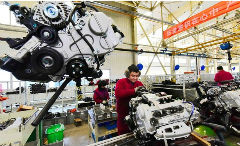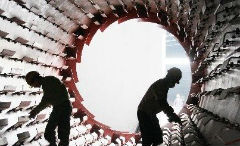PMI points to overall economic resilience
2019-02-01
China Daily
China’s official manufacturing Purchasing Managers’ Index (PMI) edged up to 49.5 in January from 49.4 in December, according to data released by the National Bureau of Statistics (NBS) on Jan 31.
Despite the slight rise, it was the second consecutive month in which the PMI was below 50. Analysts said that the rise in the PMI reading indicates that the overall economy remains resilient, but there is still the risk of further weakening and the authorities need to boost domestic demand to bolster growth.
A PMI reading above 50 indicates expansion while that below 50 indicates contraction.
“The small uptick indicates that manufacturing activities are still expanding and the economy remains resilient,” said Li He, an analyst at the research institute of Bank of China.
The index for new export orders edged up to 46.9 in January from 46.6 in the previous month, the NBS data showed. Export growth may be stronger than expected in January, Li said.
“The PMI rebounded after four months of declines, but it was still in the contraction territory, which signals that there’s still downward growth pressure given the weakening domestic and external demand,” said a research note from Bank of Communications.
In the first quarter of this year, China’s economic growth may continue to weaken, analysts Lian Ping and Liu Xuezhi said in the note. “The country’s counter-cyclical macro policy adjustments have stopped PMI from declining, but manufacturing activities are yet to rise into the expansionary territory.”
The authorities need to boost demand in the domestic market to stimulate growth since it is hard to expand external demand, said a research note of Morgan Stanley Huaxin Securities.
Li of Bank of China said that the nation’s manufacturing activities may pick up in March as supportive policies gradually take effect.
Since the Spring Festival falls in February this year, activity may weaken in the month given the seven-day holiday, when many businesses scale back their operations or close for long periods around the holiday, which begins on Feb 4 this year, leading to lower manufacturing PMI reading.
China has taken a series of measures to facilitate money transmission in the real economy and cut taxes and fees to bail out cash-thirsty small businesses. As those measures start to work, the manufacturing PMI may pick up, analysts said.


